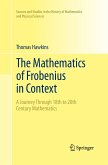In this examination of the Babylonian cuneiform "algebra" texts, based on a detailed investigation of the terminology and discursive organization of the texts, Jens Høyrup proposes that the traditional interpretation must be rejected. The texts turn out to speak not of pure numbers, but of the dimensions and areas of rectangles and other measurable geometrical magnitudes, often serving as representatives of other magnitudes (prices, workdays, etc...), much as pure numbers represent concrete magnitudes in modern applied algebra. Moreover, the geometrical procedures are seen to be reasoned to the same extent as the solutions of modern equation algebra, though not built on any explicit deductive structure.
Hinweis: Dieser Artikel kann nur an eine deutsche Lieferadresse ausgeliefert werden.
Hinweis: Dieser Artikel kann nur an eine deutsche Lieferadresse ausgeliefert werden.
From the reviews: J. Høyrup Lengths, Widths, Surfaces A Portrait of Old Babylonian Algebra and its Kin "A valuable addition to the literature of the ancient Babylonians, the subsequent Seleucid mathematics and their relations with other (later) mathematics. Drawing on studies of the culture in which the texts were developed, it contains extensive 'conformal translations' of the most important texts, as well as analyses of them and interpretations of the pictures that emerge."-THE AUSTRALIAN MATHEMATICAL SOCIETY "Høyrup has drawn together and updated the key insights of his intellectual journey of the past 15 years and presented them in one unified, handsomely produced volume. ... it contains a wealth of information and can be minded by the interested reader for years to come. It is a worthy testament to a career of deep scholarship." (Duncan J. Melville, Historia Mathematica, Vol. 33, 2006)








